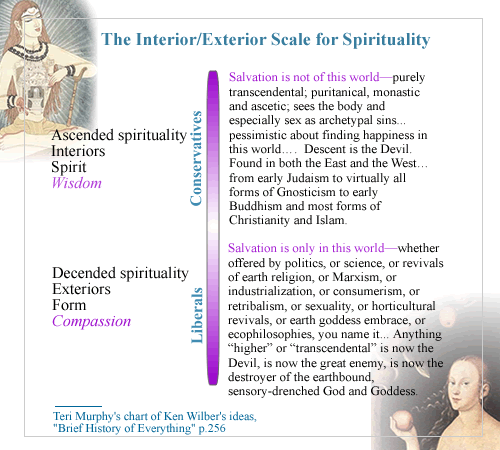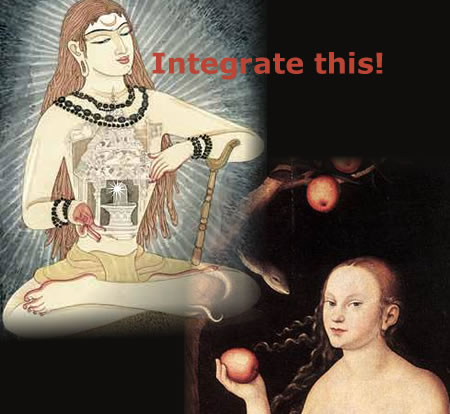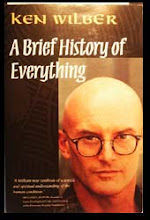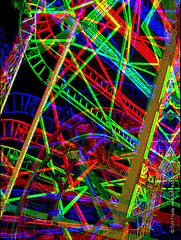
The chart is based in Ken Wilber's insight that the only reliable marker for conservatives and liberals is that conservatives favor interior solutions to suffering and liberals favor exterior solutions. (See my One Chart that Explains all Politics). Superimpose that idea over his concept that we all have a "god" or idea of salvation. He calls these the gods of the "ascending" and "descending" paths.
Wisdom vs. compassion
I personally felt a major breakthrough in dealing with the tension between these two paths when Wilber explained their respective merits. He calls the path of ascent “the path of wisdom” because it sees that behind all the forms there lies,
The One, the good, the unqualifiable Emptiness, against which all forms are seen to be illusory, fleeting, impermanent… Wisdom is the return of the Many to the One.My argument is that one way for us postmoderns to find more wisdom is by appropriately including the purity and sanctity we have transcended. As one potential example, a Sierra Club article argues that if environmentalists want to win over conservatives, they must recast their vision as honoring the sacredness of creation. But it can't just be a spin. It has to be a real vision shift.
The path of descent, on the other hand, is the path of compassion. It sees that the One actually manifests as the Many, and so all forms are to be treated equally with kindness, compassion, mercy. … it found its glory in the celebration of diversity. Not greater oneness, but greater variety was the goal of this God... It is a religion of great compassion, little wisdom.
When I shared this concept of ascending and descending religion with my favorite fundamentalist, he said, "Oh yeah. That's the horizontal axis and the vertical axis of the cross. It's the job of any good church to balance these two."

PS: Coincidence...?
I was enjoying creating the graphic above, playing with the fade between the two images, when suddenly the aescetic's walking stick seemed to spurt from Eve's tree. Woo oooh oooh as we used to say in my more New Agey days.






1 comment:
Yes, Teri, great insight! I might add that in a true 'integral' spirit, real 'salvation' requires both. It requires us to hold these opposite directions in our minds and in our hearts constantly and simultaneously, and practice 'wise compassion' and 'compassionate wisdom' starting in this world of form which is part of formless eternity.
Post a Comment